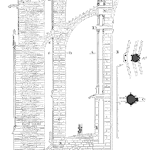
Reliability by prevention vs. reliability by failure analysis
Here is a story of multimillion dollar aircraft failures that could have been prevented by spending $25. But no one did the risk analysis right using a financial model of the consequences. It’s also the story of why RCM is a poor maintenance strategy selection methodology. RCM will send you to financial disaster and you won’t even know it. Learn how to decide when doing preventive maintenance is far better for business success than doing the on-condition maintenance recommended by business-destroying RCM analysis.
[Read more…]











